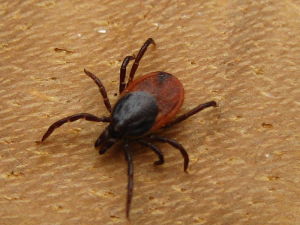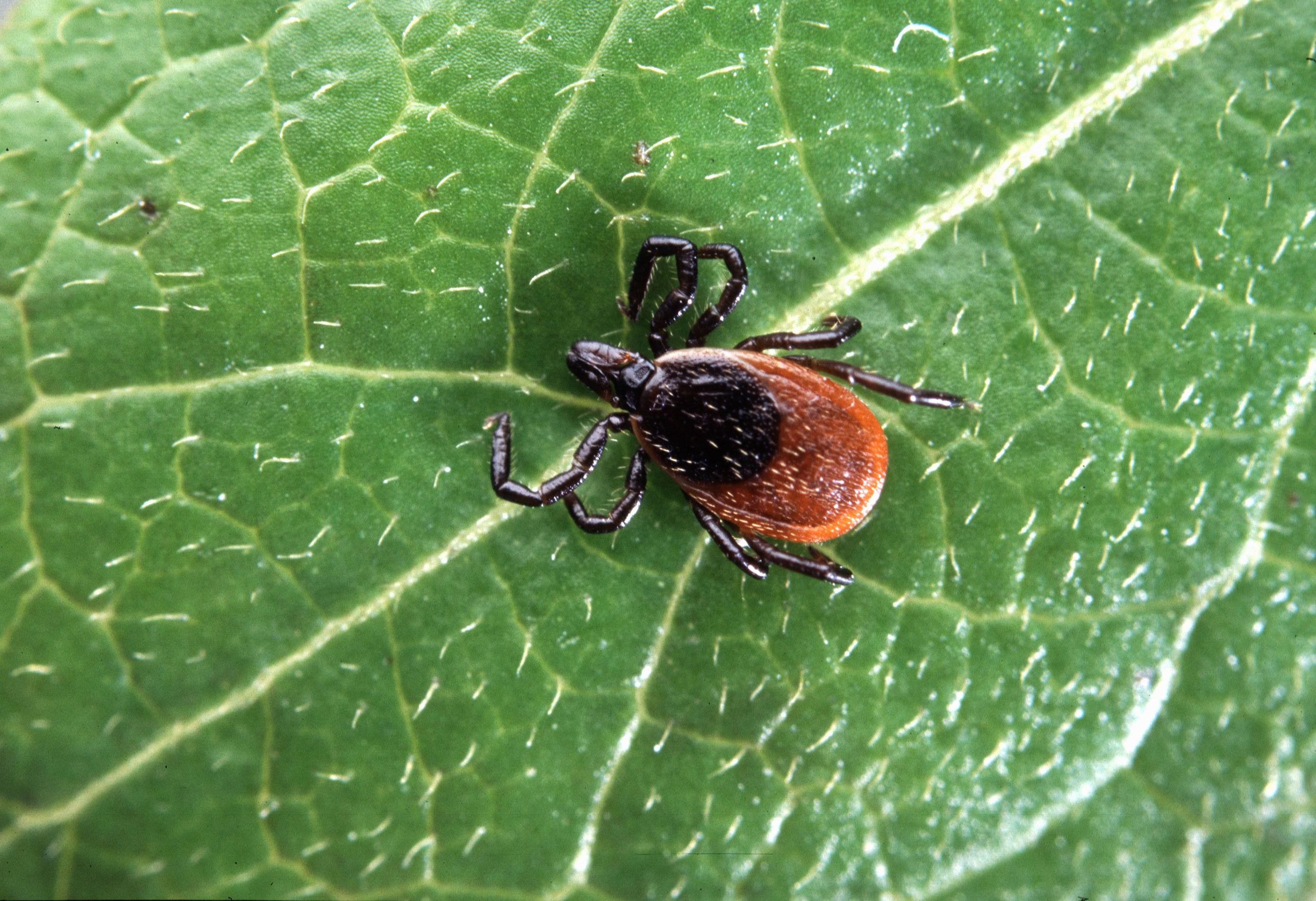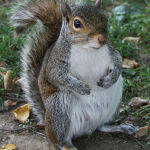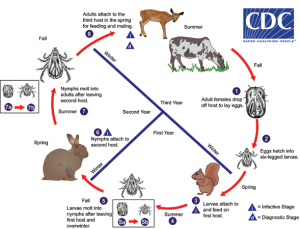Over the past couple of weeks, news media stories about the “new” tick-borne Powassan virus — have multiplied exponentially, as has the public’s growing alarm. Concern, certainly, is justified because the virus has the potential to cause severe long-term health effects — even death among 10-15% of people who become infected.
But the virus is very rare, and it isn’t new. In fact, it was first identified in Ontario, Canada, in 1958.
As a lifelong Redding resident and nursery owner, I take tick-borne diseases seriously, so I decided to examine the Powassan virus in greater detail. What I found surprised me, concerned me and helped me to frame the problem realistically. In a nutshell, I discovered that important information about the virus is NOT being shared.
The focus of this article is to help educate you about the seriousness of the virus while keeping its dangers and your risks in perspective so that you can continue to enjoy outdoor pursuits in our wonderful town. Here’s an outline of short- and long-term measures you can take to better protect yourself and loved ones, plus facts from the Centers for Disease Control & Prevention (CDC) about the Powassan virus.
TIPS FOR PROTECTION

If you find a tick, don’t panic but try to remove it within 15 minutes. Tick removal spoons are good to have on hand.
Be Observant: If you find a tick attached to your skin, stay calm. While it may take up to 48 hours for a tick to transmit Lyme Disease, the Powassan virus can be transmitted in as little as 15 minutes. Pet stores and veterinarian use a “v-notched tick removal spoon” to grab a tick and gently leverage it out of your skin. Local vets typically sell this tool for a dollar or two. Expect to pay $5-$10 for similar devices online. It’s wise to keep one handy at all times — always take it with you on outdoor activities.
Dress for Success: In the woods, or when working in the garden, wear white socks and tuck trouser legs into them when in grassy areas. Light, long-sleeved shirts are also helpful. The use of Deet at 20% is recommended, as well as pyrethrin-treated clothing. The CDC offers an interactive online tool that can help you determine which repellent is best for your needs. Also avoid overgrown paths and high grasses. Always remember to check yourself, your children and pets after being in tick-prone areas. The CDC has a useful online tool to help you navigate personal insect repellent products. CLICK HERE
Design Your Outdoor Space: Ticks usually reach your yard by hitching a ride on deer, birds or rodents. Eliminating deer traffic with fencing can reduce ticks in your yard, but it will not stop birds from flying them in, or the wind blowing the nymphs. Your landscape layout also can impact the tick population in your yard. Ticks are much less likely to be found in an open, sunny area. Limiting where your pets and children can go on the property can reduce their exposure to ticks. Avoid putting swing sets on the edge of the woods or near tall grass areas. Invisible fences can keep pets out of gardens, woods and other likely tick locations.
Application of Pesticides: Understanding the tick life cycle (see diagram below) and habitat is crucial to a successful spray prevention program that will create a healthier landscape for people, pets and plants. Fear of tick diseases is driving some people to have their yards sprayed multiple times, even monthly.
Responsible Application of Pesticides: Understanding the tick life cycle (see diagram below) and habitat is crucial to a successful spray prevention program that will create a healthier landscape for people, pets and plants. Fear of tick diseases is driving some people to have their yards sprayed multiple times, even monthly. This over-spraying is of little value to the homeowner and harmful to beneficial insects.
Right Outdoor Landscape Product: At Redding Nursery, we use a synthetic “pyrethroid” to control ticks. It’s based on the natural pyrethrins that are found in the chrysanthemum plant. While some companies offer “all-natural” tick-control products, we’ve found the synthetic spray to be much more effective than the natural products. They provide better control with fewer applications, and fewer applications mean less impact on beneficial insects and less harm to the environment. Remember, even if a product is labeled “all natural,” it is still a natural toxin. Arsenic, for example, used as one of the first broad-spectrum pesticides in the early 1900s, is all natural but highly toxic. Modern pesticides are targeted and work at a much lower toxicity level. Better results with less spraying should always be the goal.
Right Place: Ticks are more often found in tall grass, wooded perimeters, and near stone walls, garden beds, leaf litter and pachysandra. In fact, my customers whose yards feature lots of pachysandra tend to have the most trouble with ticks because the plants provide cool protection for the ticks as well as their hosts — mice, chipmunks, squirrels, woodchucks and other small mammals. Spray applications should be focused in these areas. Some companies offer a granular application on lawns, but ticks are rarely found out in an open, sunny area; the environment is too hot and dry.
Right Time: For low- to moderate-risk properties, we generally recommend one spray per year during the nymph stage of the tick life cycle (mid-May through June). For properties with a history of tick problems, I recommend a spray in April to target the wintering adult ticks, and a second spray in June to target the nymphs.
Be Aware of the Tick Life Cycle: Ticks hatch from eggs as tiny “larvae” ticks. They feed on blood meal from a host and emerge as nymph ticks from mid-May to the end of June. This is the most dangerous time for the transmission of disease, as the nymphs may contain the pathogens and are very small, making them more likely to go unnoticed. After the nymph stage, ticks emerge as adults and are active year-round, even on warm days during winter.
WHAT IS POWASSAN, AND HOW PREVALENT IS IT?
Nationally, the Centers for Disease Control & Prevention (CDC) report that from 2004-2013, the Powassan virus infected 64 individuals, resulting in seven deaths. The more recent discovery of the virus in ticks was revealed while monitoring for the West Nile virus. According to research from the Connecticut Agricultural Station, the Powassan virus was found in ticks in Bridgeport and North Branford as early as 2008. More important for those who live in Western Fairfield County is a CDC report from December 2013 on Powassan virus in areas of New York, including Westchester County, where there were 14 cases from 2004-2013.
A recent publication by the Department of Entomology at the University of Wisconsin describes the Powassan virus as a “rare but serious tick-borne illness in North America caused by a virus.” Infection with Powassan virus can cause encephalitis or acute infection and inflammation of the brain. It is classified as a “flavivirus” that is related to some mosquito-borne viruses (West Nile, dengue fever, yellow fever, etc.) that also can cause encephalitis.
The CDC provides the following outlines of Powassan virus symptoms and treatments:
Powassan Symptoms
• Many people who become infected with Powassan (POW) virus do not develop any symptoms.
• The incubation period (time from tick bite to onset of illness) ranges from about one week to one month.
• POW virus can infect the central nervous system and cause encephalitis (inflammation of the brain) and meningitis (inflammation of the membranes that surround the brain and spinal cord).
• Symptoms can include fever, headache, vomiting, weakness, confusion, loss of coordination, speech difficulties and seizures.
• Approximately half of survivors have permanent neurological symptoms, such as recurrent headaches, muscle-wasting and memory problems.
• Approximately 10% of POW virus encephalitis cases are fatal.
Powassan Treatments
• There are no vaccines or medications to treat or prevent POW virus infection.
• If you think you or a family member may have POW virus disease, see your health-care provider for evaluation and diagnosis.
• Persons with severe POW illnesses often need to be hospitalized. Treatment may include respiratory support, intravenous fluids and medications to reduce swelling in the brain.
Remember, your risk of contracting Powassan this year is most likely no different than previous years, and perhaps, it’s even less now that you know what to do. As always, please feel free to call or stop by Redding Nursery, I’m happy to answer any questions you may have.
Photo Credits:
http://upload.wikimedia.org/wikipedia/commons/thumb/0/0b/Tick_jena.JPG/800px-Tick_jena.JPG
This file is licensed under the Creative Commons Attribution-Share Alike 2.5 Generic license.Tick lifecycle: http://www.cdc.gov/dpdx/images/ticks/three_host_tick_LifeCycle.gif
Squirrel: http://upload.wikimedia.org/wikipedia/commons/thumb/9/93/Common_Squirrel.jpg/434px-Common_Squirrel.jpg This file is licensed under the Creative Commons Attribution-Share Alike 3.0 Unported license. Attribution: Nickomargolies at en.wikipedia




Very informative and helpful. Thank you.
Dear Sean,
I would be interested in getting an estimate on spraying for ticks if that’s what you suggest as well as evaluating what other spraying or treatment should be done this year. Further I would be interested in an estimate on pruning as needed.
Thank you,
Barbara Levinson